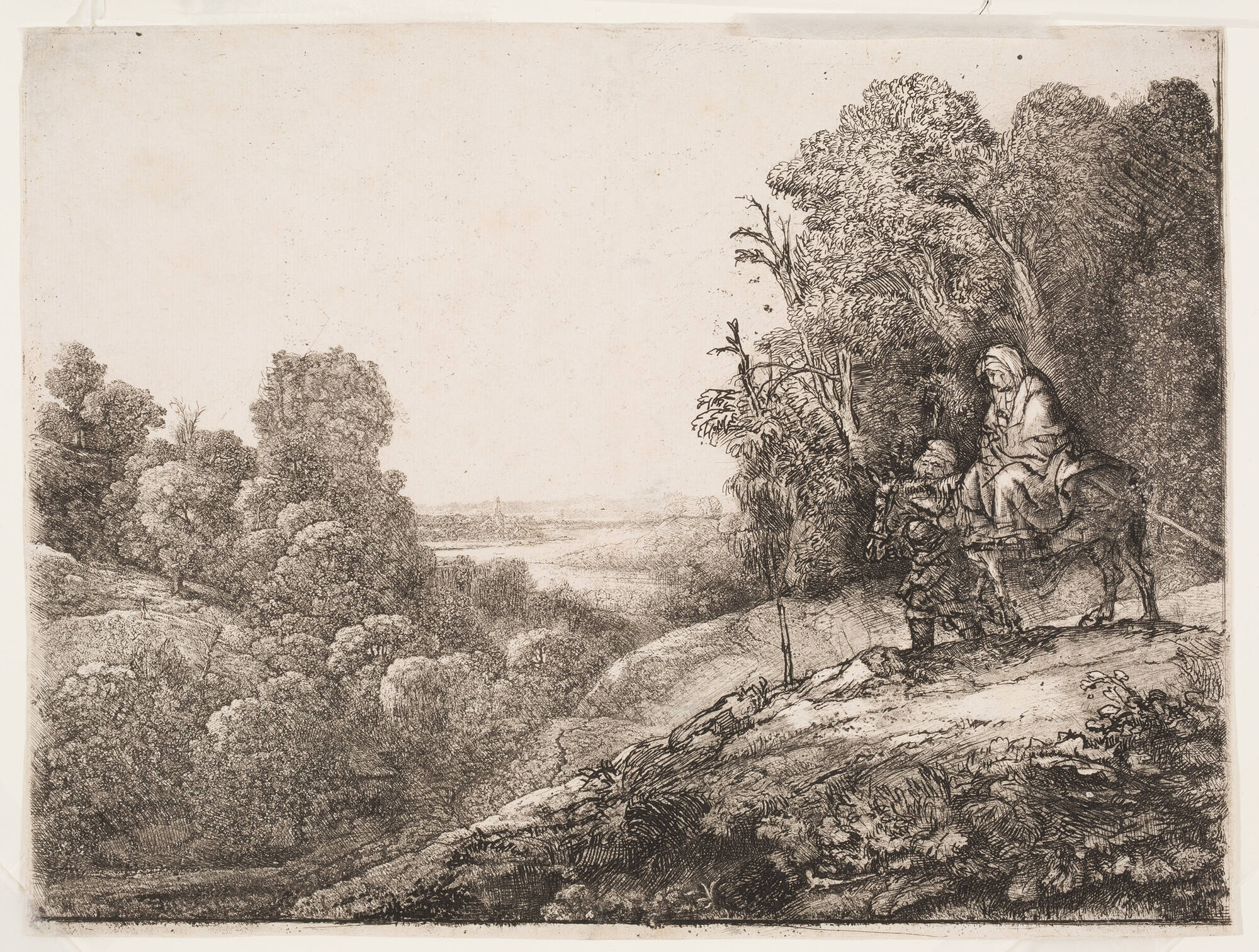
Object Details
Artist
Rembrandt van Rijn
Date
1652
Medium
Etching, drypoint, and engraving on laid paper
Dimensions
Image: 8 3/8 x 11 1/8 inches (21.3 x 28.3 cm)
Sheet: 8 1/2 x 11 1/4 inches (21.6 x 28.6 cm)
Credit Line
Acquired through the Membership Purchase Fund
Object
Number
84.010
During the 1650s, Rembrandt created a group of prints now known as his “dark manner” etchings. I(…)
During the 1650s, Rembrandt created a group of prints now known as his “dark manner” etchings. In them, the artist explored the range of darkened atmospheric tone he could produce. This impression represents the final state in a group of six in which Rembrandt increasingly darkened the scene without sacrificing the legibility of his figures. With each state, he added more etched and drypoint lines, eventually enveloping Joseph, Mary, and the donkey in near total darkness as they traverse a barely discernible landscape, with only the lantern to guide them.
In the fifth state of this print, the plate has begun to wear, and the forest no longer prints as darkly behind the traveling family group. Rembrandt seems to have taken advantage of this change by burnishing highlights onto the cloak of the Virgin, and the ground in front of the donkey, that lend the foreground greater three-dimensionality.The watermark on this impression is consistent with a later edition from the plate.
(“Lines of Inquiry: Learning from Rembrandt’s Etchings,” curated by Andrew C. Weislogel and presented at the Johnson Museum September 23–December 17, 2017)












